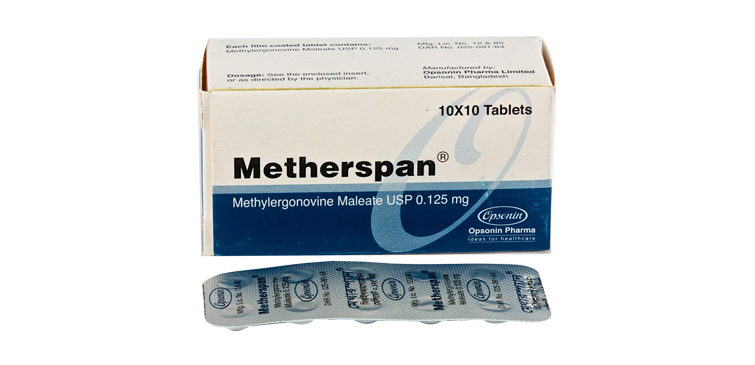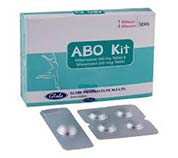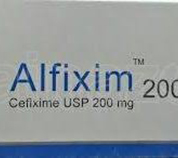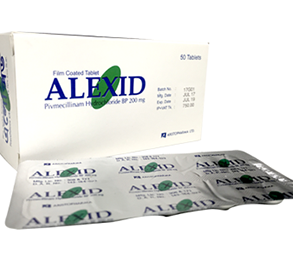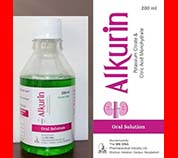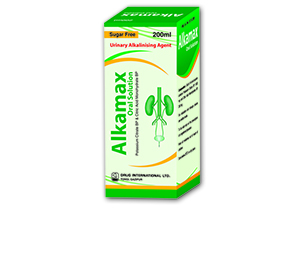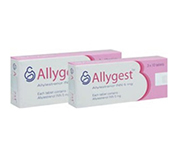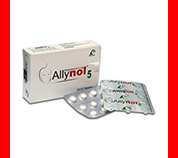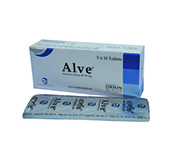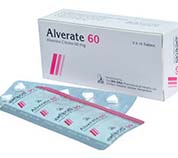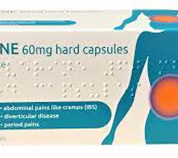Metherspan Tablet 125 mcg 1 Pcs
Alternative products
Methylergonovine Maleate
Indications
Following delivery of the placenta, for routine management of uterine atony, hemorrhage and subinvolution of the uterus. For control of uterine hemorrhage in the second stage of labor following delivery of the anterior shoulder.
Pharmacology
Methylergonovine Maleate acts directly on the smooth muscle of the uterus and increases the tone, rate, and amplitude of rhythmic contractions. Thus, it induces a rapid and sustained tetanic uterotonic effect which shortens the third stage of labor and reduces blood loss. The onset of action after I.V. administration is immediate; after I.M. administration, 2-5 minutes, and after oral administration, 5-10 minutes.
Dosage & Administration
Intramuscularly: 1 ml/0.2 mg, after delivery of the anterior shoulder, after delivery of the placenta, or during the puerperium. May be repeated as required, at intervals of 2-4 hours.
Intravenously: 1 ml/0.2 mg, administered slowly over a period of no less than 60 seconds
Orally: One tablet, 0.2 mg, 3 or 4 times daily in the puerperium for a maximum of 1 week.
* চিকিৎসকের পরামর্শ মোতাবেক ঔষধ সেবন করুন'
Interaction
There have been rare reports of serious adverse events in connection with the coadministration of certain ergot alkaloid drugs (e.g., dihydroergotamine and ergotamine) and potent CYP 3A4 inhibitors, resulting in vasospasm leading to cerebral ischemia and/or ischemia of the extremities. Although there have been no reports of such interactions with methylergonovine alone, potent CYP 3A4 inhibitors should not be coadministered with methylergonovine. Examples of some of the more potent CYP 3A4 inhibitors include macrolide antibiotics (e.g., erythromycin, troleandomycin, clarithromycin), HIV protease or reverse transcriptase inhibitors (e.g., ritonavir, indinavir, nelfinavir, delavirdine) or azole antifungals (e.g., ketoconazole, itraconazole, voriconazole). Less potent CYP 3A4 inhibitors should be administered with caution. Less potent inhibitors include saquinavir, nefazodone, fluconazole, grapefruit juice, fluoxetine, fluvoxamine, zileuton, and clotrimazole. These lists are not exhaustive, and the prescriber should consider the effects on CYP 3A4 of other agents being considered for concomitant use with methylergonovine.
Contraindications
Hypertension; toxemia; pregnancy; and hypersensitivity.
Side Effects
The most common adverse reaction is hypertension associated in several cases with seizure and/or headache. Hypotension has also been reported. Abdominal pain (caused by uterine contractions), nausea and vomiting have occurred occasionally. Rarely observed reactions have included: acute myocardial infarction, transient chest pains, vasoconstriction, vasospasm, coronary arterial spasm, bradycardia, tachycardia, dyspnea, hematuria, thrombophlebitis, water intoxication, hallucinations, leg cramps, dizziness, tinnitus, nasal congestion, diarrhea, diaphoresis, palpitation, rash, and foul taste. There have been rare isolated reports of anaphylaxis, without a proven causal relationship to the drug product.
Pregnancy & Lactation
Pregnancy Category C. Animal reproductive studies have not been conducted with Methylergonovine. It is also not known whether methylergonovine maleate can cause fetal harm or can affect reproductive capacity. Use of Methylergonovine is contraindicated during pregnancy because of its uterotonic effects.
Breast-feeding: Mothers should not breast-feed during treatment with Methylergonovine. Milk secreted during this period should be discarded. Methylergonovine may produce adverse effects in the breast-feeding infant. Methylergonovine may also reduce the yield of breast milk. Mothers should wait at least 12 hours after administration of the last dose of Methylergonovine before initiating or resuming breast feeding
Precautions & Warnings
Caution should be exercised in the presence of sepsis, obliterative vascular disease. Also use with caution during the second stage of labor. The necessity for manual removal of a retained placenta should occur only rarely with proper technique and adequate allowance of time for its spontaneous separation.
Use in Special Populations
Pediatric Use: Safety and effectiveness in pediatric patients have not been established.
Overdose Effects
Symptoms of acute overdose may include: nausea, vomiting, oliquria, abdominal pain, numbness, tingling of the extremities, rise in blood pressure, in severe cases followed by hypotension, respiratory depression, hypothermia, convulsions, and coma.
Therapeutic Class
Drugs acting on the Uterus
Storage Conditions
Store below 25°C; in tight, light-resistant container.
- Type Tablet
- Tag
- Morbi leo risus
- Porta ac consectetur ac
- Vestibulum at eros
